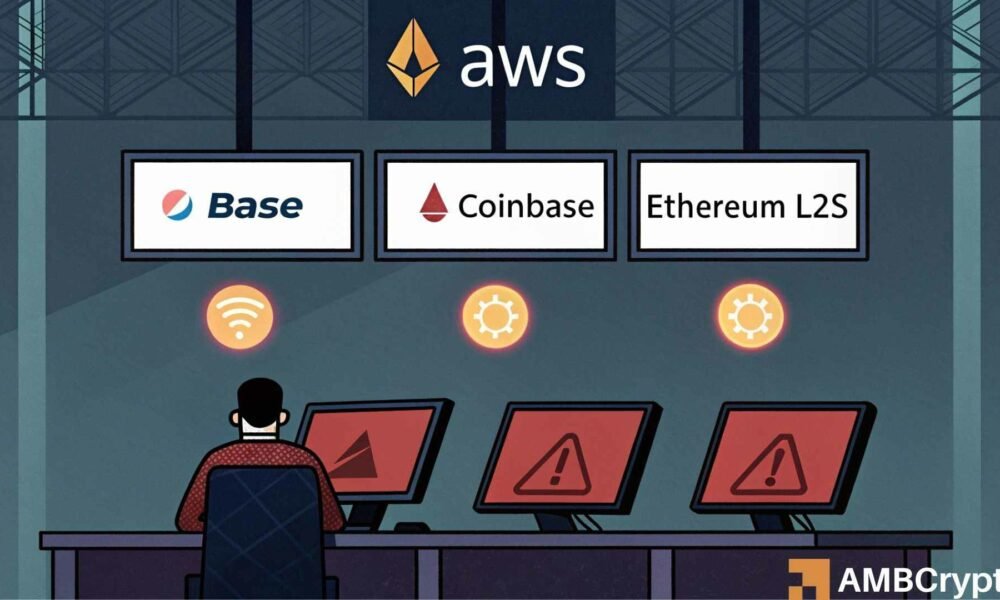The Impact of the AWS Outage on Crypto Applications: A Wake-Up Call for Decentralization?
Introduction: The AWS Outage That Shook the Crypto World
On October 20, 2023, a significant outage at Amazon Web Services (AWS) sent shockwaves through the cryptocurrency ecosystem, revealing vulnerabilities in many Web3 applications. The disruption lasted several hours and primarily impacted Ethereum’s Layer 2 protocol, Base, which is incubated by Coinbase. Users encountered various problems, including a ‘zero balance’ glitch, which rendered numerous services temporarily inaccessible. This event raises questions about the reliance of the crypto sector on centralized cloud providers and whether this incident will serve as a catalyst for the industry to pursue true decentralization.
Centralization vs. Decentralization: A Critical Paradox
The AWS outage starkly highlighted a contradiction in the Web3 narrative—that despite the promise of decentralization, many applications still primarily depend on centralized cloud services. Companies frequently utilize AWS and other major providers like Google and Oracle for on-demand computational resources to minimize costs. The irony is that while the applications themselves may be marketed as decentralized, the underlying infrastructure remains centralized, making them vulnerable to outages. The incident exposed these weaknesses, prompting users and supporters to question the legitimacy of claimed decentralization in the crypto space.
Affected Services: More Than Just the Protocols
The impact of the outage extended far beyond the Base app. Centralized exchanges such as Coinbase and Crypto.com experienced significant issues that prevented users from trading or conducting transfers. Even non-custodial wallets like MetaMask were not immune to disruption, further demonstrating the ripple effects that a singular point of failure can create in the crypto ecosystem. Infura, a widely used API provider for Ethereum, reported multiple outages across various protocols and applications, including Polygon, Optimism, Arbitrum, and more. This incident serves as a reminder for users that even decentralized systems can still be heavily influenced by centralized infrastructures.
Community Response: Criticism and Calls for Change
The broader cryptocurrency community reacted swiftly to the AWS outage, utilizing social media platforms to voice their frustrations. Many echoed sentiments about the failings of Web3 applications, with one user remarking, "So AWS went down, and half of crypto just stopped working. Decentralization vibes are off the charts today." This type of backlash suggests that awareness regarding the centralization risks associated with current infrastructure is growing, leading some to reconsider their trust in Web3 applications and services.
The Journey Towards True Decentralization
Despite the AWS outage and the issues it caused, the movement toward true decentralization in the crypto sector is still in its early stages. Alternatives like Akash Network are beginning to gain traction, but overall adoption remains cautious. The events surrounding the AWS outage could serve as a pivotal moment, pushing developers and companies to reconsider their infrastructure choices in favor of decentralized solutions. The question now is whether this incident will serve as a significant motivator for broader adoption of decentralized cloud services.
Conclusion: A Turning Point for the Crypto Sector?
As the AWS outage came to an end and services were restored, the immediate effects on the crypto market were significant. Bitcoin’s price, which had momentarily surged above $110,000, retreated sharply following the disruption, illustrating the direct impact of technical issues on market dynamics. The lasting implications of this incident remain uncertain, but it may indeed serve as a wake-up call for the crypto industry. To truly fulfill the promise of decentralization, stakeholders must prioritize assessing their reliance on centralized services and explore alternative infrastructure options, potentially paving the way for a more resilient and decentralized future in the crypto landscape.


